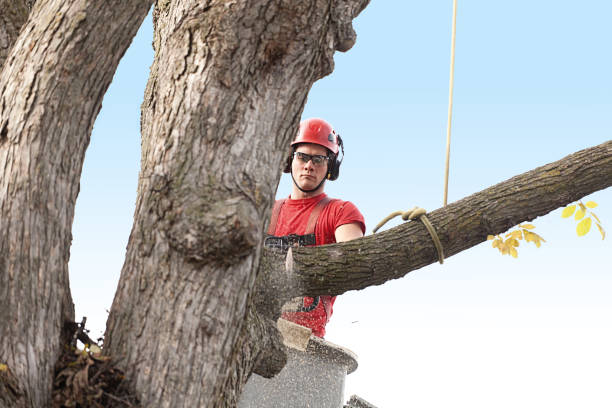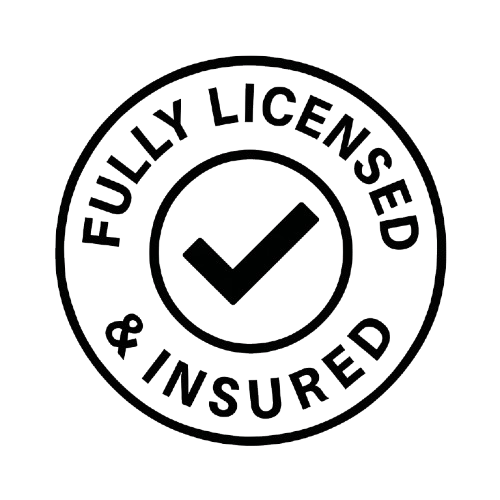How to Trim a Mulberry Tree

Mulberry trees grow quickly and have beautiful foliage, and delicious fruit. To keep these trees thriving, regular pruning is essential. Whether your goal is to shape the tree, control its size, or enhance fruit production, proper pruning will ensure your tree remains healthy and productive. In this guide, we’ll take you step-by-step through the best methods for trimming a mulberry tree, including timing, techniques, and aftercare. Why Pruning Your Mulberry Tree is Important Pruning serves several critical purposes for mulberry trees: Promoting Tree Health: Pruning removes dead or diseased branches, which can reduce the risk of infections and encouraging healthy growth. Controlling Size: Mulberry trees grow quickly and can become quite large if left unchecked. Regular pruning keeps the tree at a manageable size for your garden or yard. Boosting Fruit Production: For fruit-bearing varieties, proper pruning ensures an abundance of accessible fruit. Shaping: In some cases, pruning is done for aesthetic reasons, such as maintaining a desired shape or form. When is the Best Time to Prune a Mulberry Tree? Major Pruning in Late Winter The best time for heavy pruning is during the tree’s dormant phase, typically in late winter, just before the new growth starts in the spring. Pruning during dormancy reduces sap loss and allows the tree to heal more efficiently. It’s also a good time to see the tree’s structure clearly without foliage obstructing your view. Light Pruning in Early Summer If your tree has excessive growth, you can perform some light pruning in early summer to maintain its size. Be cautious about cutting larger branches, though, as mulberries can struggle to heal these wounds during the active growing season. Beware of Sap Bleeding Mulberry trees are known to bleed sap from pruning wounds, especially if pruned outside of the dormant season. While sap bleeding isn’t harmful to the tree, it can be unsightly and may cause irritation if it gets on your skin. Essential Tools and Pruning Techniques Before you start pruning, make sure you have the right tools on hand: Tool Use Importance Best for Cost Pruning Shears Cutting small branches Ensures clean cuts to prevent damage Thin, young branches $20 – $40 Loppers Cutting thicker branches Necessary for larger branches Medium to large branches $30 – $60 Ladder Reaching higher branches Ensures safety and accessibility High branches and hard-to-reach areas $80 – $150 Gloves Protecting hands from cuts and sap Prevents injuries All types of branches $10 – $20 Safety Goggles Protecting eyes from debris Prevents eye injuries When cutting branches above the head $10 – $20 Hand Pruners: Best for small branches under 1 inch thick. Loppers: Ideal for branches that are 1-2 inches in diameter. Pruning Saw: For thicker branches that are over 2 inches in diameter. Sterilizing Agent: Always clean tools before and after pruning to prevent diseases from spreading between plants. Avoid Cutting Large Branches It’s best to avoid removing large branches (greater than 2 inches in diameter) as mulberry trees are slow to heal from large wounds, making them more susceptible to pests and infections. Step-by-Step Pruning Instructions Step 1: Remove Dead or Damaged Branches Begin by cutting away any branches that are dead, diseased, or damaged. This will enhance the tree’s overall health and reduce the risk of disease spreading. Make sure to cut back to healthy wood, leaving the branch collar intact to promote healing. Step 2: Remove Crossing and Inward-Growing Branches Branches that cross or grow inward towards the center of the tree should be pruned. These can crowd the tree, reduce airflow, and cause branches to rub against each other, which may lead to wounds and disease. Keep the canopy open to encourage better air circulation and sunlight exposure. Step 3: Shape the Tree for Light and Airflow When shaping the tree, focus on creating an open, vase-like structure with good spacing between branches. This allows light and air to reach the interior of the tree, which is especially important for fruit-bearing trees as it helps reduce the likelihood of disease and promotes even ripening of fruit. Step 4: Prune to Control Size If your tree is becoming too tall or wide, carefully trim back the larger branches to a manageable size. When pruning for fruit production, remember that mulberry trees bear fruit on last year’s growth, so be mindful not to over-prune and remove too many fruit-bearing branches. Advanced Pruning Techniques Pruning for Maximum Fruit Production Mulberries produce fruit on wood that grew the previous year, so pruning needs to be done carefully to preserve these branches. Here are some tips: Remove any dead or damaged wood first. Thin out branches to improve light penetration and air circulation. Lightly prune lateral branches, but ensure enough of the previous year’s growth remains to encourage fruit production. Consider creating a “harvesting notch” by pruning specific areas to make fruit more accessible. Pollarding for Shape Control Pollarding is a technique used to maintain a specific shape or control the height of your tree by regularly removing new growth back to the larger framework branches. This method should be started when the tree is young and requires consistent pruning to maintain. If done improperly, pollarding can weaken the tree and make it vulnerable to disease, so proceed with caution. Common Pruning Mistakes to Avoid Over-pruning: Taking off too much of the tree can reduce its vigor and fruit yield, particularly if you remove too much of last year’s growth. Topping: Avoid cutting the top of the tree, as this encourages weak regrowth and can damage the tree’s structure. Pruning Large Branches: Large cuts heal slowly and may leave the tree susceptible to pests and disease. Try to avoid pruning branches over 2 inches in diameter. Aftercare for Your Mulberry Tree Once you’ve finished pruning, your tree may need a bit of extra care: Monitor for Sap Bleeding: If you pruned outside of the dormant season, it’s normal to see some sap bleeding. This usually stops on its own, but monitor the tree to ensure the
Tree Removal in NYC: A Comprehensive Guide for Property Owners

Living in the vibrant, densely packed boroughs of New York City, particularly Manhattan and the Bronx, comes with unique challenges – one of them being tree management. This guide delves into the various reasons why NYC property owners might need professional tree removal services, explores the cutting-edge equipment utilized by NYC Tree Pro, and highlights the key advantages of choosing them for your arborist needs. Compelling Reasons for Tree Removal in NYC Tree removal in NYC isn’t a one-size-fits-all solution. Here are some of the most common reasons why property owners seek professional tree removal services: Safety First: In a city environment, overgrown or damaged trees pose a significant threat. Dead or diseased branches can become projectiles in strong winds, potentially causing property damage, injuries, or worse. Uprooted trees due to storms can be catastrophic. NYC Tree Pro prioritizes safety with 24/7 emergency services to address urgent situations and mitigate potential hazards before they occur. Tree Health: Sometimes, despite our best efforts, trees succumb to disease or insect infestations. These compromised trees can become breeding grounds for pests and diseases, jeopardizing the health of nearby healthy trees. Early detection and intervention are crucial. NYC Tree Pro’s certified arborists possess the expertise to diagnose tree health issues and recommend the most appropriate course of action, including removal if necessary. Aesthetics and Property Value: Well-maintained trees enhance the visual appeal of property and contribute to its overall value. However, overgrown, diseased, or poorly placed trees can detract from the aesthetics and even lower your property value. Strategic tree removal can create a more visually pleasing landscape, improve sunlight penetration, and open up valuable space for new landscaping projects. Structural Concerns: Trees planted too close to buildings can wreak havoc on your foundation over time. Their expansive root systems can grow into and damage foundations, sewer lines, and other underground infrastructure, leading to expensive repairs. Additionally, large trees with aggressive root systems can crack sidewalks and driveways. Proactive tree removal by NYC Tree Pro’s skilled professionals can save you considerable expense and hassle in the long run. NYC Tree Pro’s Cutting-Edge Equipment Arsenal At NYC Tree Pro, we understand that every tree removal project presents unique challenges. That’s why we invest heavily in the latest and most advanced equipment in the industry, ensuring we can do any job efficiently and safely, no matter the size or complexity. Here’s a glimpse into our state-of-the-art equipment: Aerial Lift Trucks: These specialized vehicles provide unrivaled access for our arborists. They can safely reach high branches and navigate tight urban spaces where traditional climbing methods might be impractical. High-Capacity Wood Chippers: We are committed to eco-friendly practices. Our powerful wood chippers transform branches and trunks into valuable mulch, which can be used for landscaping projects or redistributed for other purposes. This not only streamlines debris management but also promotes sustainability. Precision Cranes: For particularly large or precariously positioned trees, cranes become an invaluable tool. Skilled crane operators work hand-in-hand with our arborists to execute a smooth and efficient removal. Why Choose NYC Tree Pro? Here’s What Sets Us Apart We are a family-owned, third-generation business with a deep-rooted commitment to serving the NYC community. Here are just a few reasons why NYC Tree Pro should be your go-to choice for tree removal services: 24/7 Emergency Response: We understand that emergencies don’t wait for convenient business hours. That’s why we offer 24/7 emergency tree services to address urgent tree-related issues, ensuring your safety and minimizing potential damage. Unmatched Expertise: Our team comprises arborists who possess the knowledge and experience to determine the safest and most efficient removal methods, and navigate the complexities of urban tree removal. We combine traditional arborist expertise with the latest advancements in technology to deliver exceptional results. Commitment to Safety: Safety is paramount at NYC Tree Pro. Our crew members are trained and equipped with the latest safety gear, adhering to strict industry standards. We prioritize a meticulous planning process before every removal, minimizing risk and ensuring a smooth operation. Transparency and Communication: We believe in clear communication, and our arborists will conduct a thorough inspection of your property and trees, explain their recommendations in detail, and answer any questions you may have. We’ll provide you with a transparent and upfront cost estimate before any work begins. Respect for Your Property: We understand that your property is valuable to you. Our cleanup is thorough, leaving your property clean and debris-free. Environmentally-Conscious Practices: Sustainability is a core value at NYC Tree Pro. We utilize eco-friendly practices whenever possible. Our wood chippers transform wood debris into valuable mulch, which can be reused for landscaping projects. We also recycle any materials that can be salvaged. Client Satisfaction Guaranteed: Customer satisfaction is our priority. We strive to exceed your expectations with exceptional service, clear communication, and a commitment to safety and efficiency. We are proud of our track record of satisfied customers, as shown by the positive testimonials on our website and Google Map listing. Client Testimonials: Proven Excellence Here are a few examples from our Google reviews: Mark K: “Great job! Was in a jam after a storm. Got an estimate the next day and the job was completed the following morning. The tree was in a tough spot behind the building. Excellent execution by the crew. Would recommend!” Jerry S: “Thank you for removing my tree behind my business. Good prices and great people. I would highly recommend this company.” These testimonials highlight our prompt response, professional execution, and customer-centric approach. Ready to Address Your Tree Removal Needs? NYC Tree Pro is your trusted partner for all your tree removal needs in Manhattan and the Bronx. Whether you’re facing a safety hazard with a diseased tree, need to improve the aesthetics of your property, or require emergency storm cleanup, our team of certified arborists and highly trained crew members are here to help. Contact NYC Tree Pro today for a free consultation and quote. We’ll assess your situation, discuss your options, and provide you with
How Do I Know If a Tree Needs to Be Removed?

Trees add so much to our lives, from the beauty of leafy streets to the shade on a hot summer day. But sometimes, those same trees can become a problem. Knowing when to remove a tree can prevent damage and keep your property safe. If you’re in Manhattan, especially the Upper East Side or Upper West Side, this guide will help you understand when it’s time to call in the pros. NYC Tree Pro has the expertise to handle all your tree care needs. How Do You Know If a Tree Is Going to Uproot? When a tree in your yard or near your building looks like it might uproot, it’s time to take action. Here are some signs to watch for: Leaning Trunk: If a tree that used to stand tall is now leaning, especially after a storm, it’s a sign that the roots might be compromised. In Manhattan, where space is tight, a leaning tree can quickly become a hazard. Root Damage: Have you noticed construction around your property? Excavation work can harm roots, making a tree unstable. NYC Tree Pro can assess the damage and determine if the tree needs to come down. Soil Heaving: Look around the base of the tree. If you see the soil lifting or cracking, it means the roots are pulling out of the ground. This is especially common after heavy rains or floods. What Are the Signs That a Tree Might Fall? A tree that’s at risk of falling can be a serious danger. Here’s what to look for: Cracks in the Trunk: Deep splits or cracks can mean the tree is structurally unsound. If you’re walking around Manhattan and notice a tree with a large crack, it’s best to report it. Dead or Falling Branches: While it’s normal for trees to shed a few leaves and branches, too many dead branches are a red flag. Imagine walking down Broadway on the Upper West Side and seeing a tree shedding large branches—that’s a situation that needs attention. Fungus Growth: Mushrooms growing at the base of a tree usually indicate internal rot. This compromises the tree’s stability. NYC Tree Pro can inspect and remove diseased trees safely. Which Way Will a Tree Fall in a Storm? Predicting where a tree will fall during a storm can be tricky, but here are some clues: Leaning Direction: A tree that leans towards your house is more likely to fall in that direction. Weight Distribution: If one side of the tree has more branches and leaves, it’s more likely to fall that way. In Manhattan, where buildings are close together, this can be especially dangerous. Wind Direction: During storms, trees usually fall in the direction of the wind. Strong winds can uproot even healthy trees. How Do You Tell If a Tree Will Hit Your House? Worried about a tree hitting your house? Here’s how to assess the risk: Proximity: Measure the distance between the tree and your house. If the tree is taller than this distance, it’s a potential risk. In Manhattan, where buildings are often close to the street, this is a common concern. Branch Overhang: Large branches overhanging your house can cause damage if they break off. Picture a large tree branch crashing through your window—it’s not something you want to deal with. Tree Health: Regular inspections by NYC Tree Pro can help determine if your trees are at risk. Real-Life Examples and Solutions Upper East Side Brownstone A resident on East 79th Street noticed their tree leaning significantly after a heavy storm. Concerned about the safety of their home and neighbors, they called NYC Tree Pro. Our team quickly assessed the root damage and safely removed the tree before it could cause any harm. Upper West Side Brownstone On West 86th Street, a homeowner had a tree in front of their brownstone that was damaged and leaning dangerously. Passers-by were concerned it might fall on an unsuspecting walker. The homeowner called NYC Tree Pro. We responded promptly, evaluated the tree’s condition, and removed it safely, ensuring the safety of both the property and the public. Midtown Commercial Building A large tree fell on a walkway in front of a commercial building on Madison Avenue during a storm. NYC Tree Pro’s emergency team arrived swiftly to clear the tree and debris, restoring access and safety to the area. This prompt response prevented further disruption for the businesses in the building. Why Hiring NYC Tree Pro Is a Good Idea Living in Manhattan means you need a tree service that understands urban environments. Here’s why NYC Tree Pro is your best choice: Expert Arborists: Our team consists of certified arborists who know the unique challenges of tree care in Manhattan. From the Upper East Side to the Upper West Side, we’ve got you covered. Emergency Services: Trees can pose immediate hazards, especially after storms. Our teams are available 24/7 in an emergency. Call us if you need tree service before, during, or after a storm. Storm Cleanup: NYC Tree Pro is equipped to handle extensive storm damage. From removing fallen trees to clearing debris, we restore your property quickly and safely. Safety First: Our professionals use state-of-the-art equipment and follow strict safety protocols to ensure every job is done right. Conclusion Don’t wait until it’s too late. If you notice any of these warning signs, contact NYC Tree Pro today. Our expert team is ready to assess your trees and provide the necessary services to keep your property safe. Whether you’re in the Upper East Side, Upper West Side, or anywhere in Manhattan, we’re here to help. Call us now for a free consultation and let’s keep your trees healthy and your property safe.




